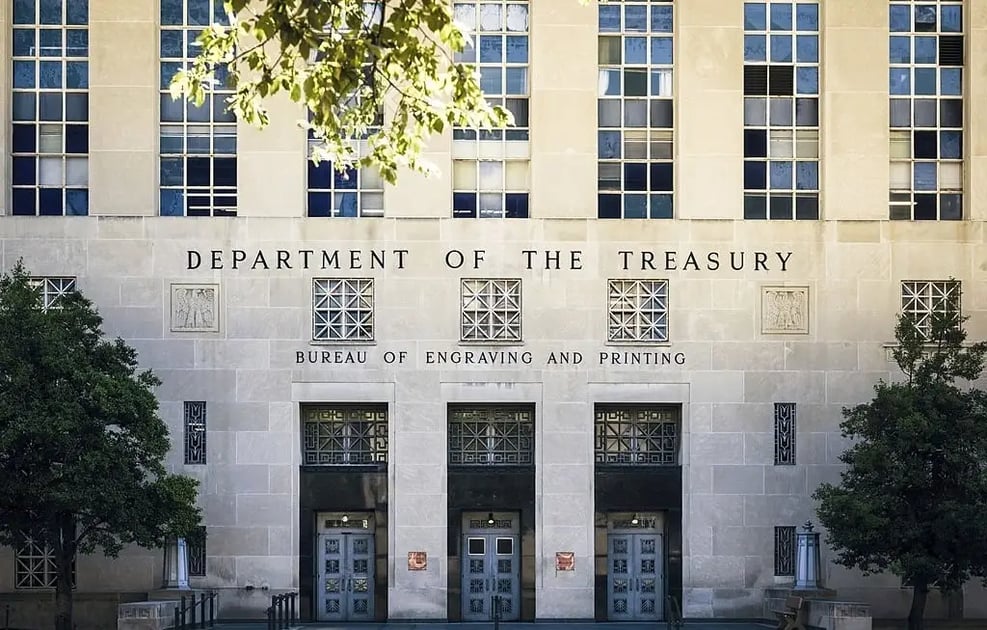Breaking The US Debt Ceiling
May 16, 2023 •Daphne Mason

The US debt ceiling, a statutory limit on the amount of debt the US government can issue, has been a recurring topic of concern and debate. As family offices navigate the complex financial landscape, understanding the implications of breaching the debt ceiling is crucial.
With the Fed's tightening cycle coming to a close and interest rate volatility decreasing, the US dollar has been steadily declining in value. The tide is expected to turn again against the USD if the waves of uncertainty, especially about the US debt limit, sweeps the news cycle.
However, there is general consensus that the debt limit problem has the potential to ignite a quick surge in FX volatility, especially if the surrounding dynamics look more challenging or drawn out than anticipated by markets. The possibility of an economic hard landing for the US economy and the subsequent market reaction has been brought up again.
There is a real possibility that the safe haven USD might seek to climb due to rising FX volatility as concerns about the economic hard landing in the US spread further. However, a peaceful conclusion is the most likely result and the theatrics displayed by both sides of the political aisle in the US are expected to wither in the face of looming anger by the American public.
This would likely maintain lower levels of FX volatility, resulting in a weaker USD moving ahead.
Let us dive further into the intricacies of the US debt ceiling, explore its potential financial impact on family offices, and discuss strategies to navigate the uncertainty it poses.
The US Debt Ceiling Explained
The US debt ceiling is a legislative restriction that caps the amount of debt the federal government can incur to finance its operations. Once the ceiling is reached, the Treasury Department must rely on extraordinary measures to continue meeting its financial obligations. Failure to raise the debt ceiling in a timely manner could result in a government shutdown or, more significantly, a default on existing financial obligations.
Financial Impacts of Breaching the Debt Ceiling
Market Volatility: The uncertainty surrounding the debt ceiling can trigger market volatility, leading to increased market risk and potential disruptions in the financial markets. Family offices need to be prepared for potential short-term market fluctuations and the impact on their investment portfolios.
Interest Rates and Borrowing Costs: Breaching the debt ceiling may cause a downgrade in the US credit rating, leading to higher borrowing costs for the government. This can ripple through the economy, potentially increasing interest rates and affecting the cost of capital for businesses and individuals.
Investor Confidence: A failure to raise the debt ceiling in a timely manner can erode investor confidence in the US economy, impacting both domestic and international investors. Uncertainty around government finances can lead to a flight to safety, affecting asset prices and investment decisions.
Economic Slowdown: The financial ramifications of breaching the debt ceiling could trigger an economic slowdown or recession. Reduced government spending and a contraction in credit availability could dampen economic activity, affecting business growth and employment rates.
Navigating the Uncertainty: Strategies for Family Offices
Diversification: Maintain a well-diversified investment portfolio across asset classes and geographies. This can help mitigate the potential impact of market volatility and provide resilience during uncertain times.
Risk Assessment: Conduct a thorough risk assessment of your investment holdings, considering exposure to sectors sensitive to interest rate changes or government spending, such as government bonds, financial institutions, or certain industries heavily reliant on government contracts.
Cash Flow Management: Review and enhance cash flow management strategies, ensuring sufficient liquidity to withstand short-term disruptions. Evaluate the potential impact on cash flows from government payment delays or changes in interest rates.
Active Monitoring: Stay informed about the progress of debt ceiling negotiations and potential policy changes. Maintain regular communication with trusted advisors and financial professionals to adapt strategies accordingly.
Scenario Planning: Develop contingency plans based on different debt ceiling scenarios, assessing potential impacts on investments, credit markets, and borrowing costs. This proactive approach can help family offices better navigate any disruptions that may arise.
As family offices navigate the ever-changing financial landscape, understanding the implications of the US debt ceiling is paramount. The potential financial impact of breaching the ceiling can have far-reaching consequences, from market volatility to increased borrowing costs.
By employing strategies such as diversification, risk assessment, cash flow management, active monitoring, and scenario planning, family offices can navigate the uncertainty surrounding the debt ceiling and position themselves to withstand potential disruptions.
Stay informed, plan ahead, and adapt to changing circumstances to effectively manage your financial exposure in the face of this critical issue.
**********
Like what you read? Share this article with your network by clicking on the Share buttons below.
You may also be interested in these articles:
- From Farm to Fortune: How Billionaires are Changing the Game with Impact Investing
- The Midas Touch
- The Downfall of Credit Suisse
- The Future Of Fish Farming
Disclaimer: The views and opinions expressed in this article are those of the author and do not necessarily reflect the official policy or position of Maiden Capital. The information provided is meant as a general guide only and should not be construed as investment advice. You should always consult your financial, legal and tax advisers regarding private equity and real estate investments
